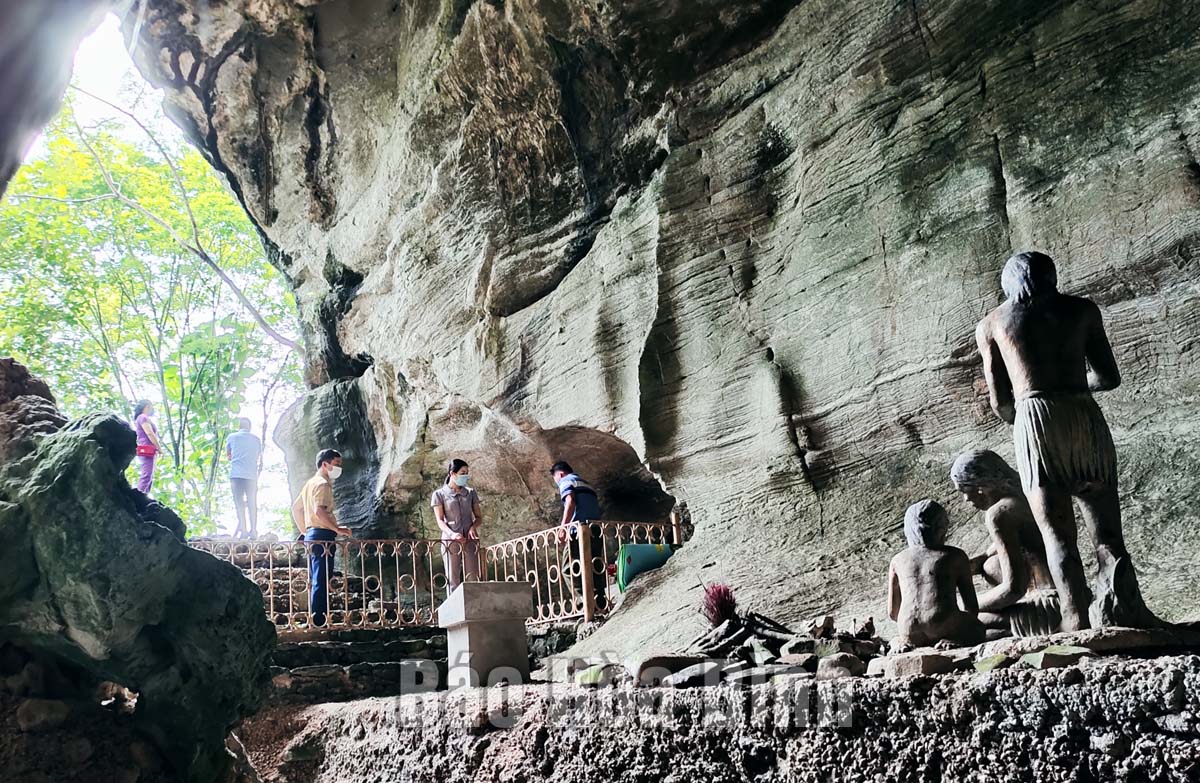(HBO) – Hoa Binh province is an ancient land where humans came to reside from very early periods. The Hoa Binh Civilisation was discovered in 1926 by Madeleine Colani, a female archaeologist of France. In 1932, it was recognised by the world and officially took its name.
The provincial Museum and the Centre for
Prehistoric Southeast Asian Studies carry out an excavation at the Vanh Village
stone shelter, an archaeological site in Yen Phu commune of Lac Son district.
The Hoa Binh Civilisation scattered across
mainland Southeast Asia. Its vestiges concentrate in Hoa Binh province, where a
rich diversity of artefacts have been found, with stone tools being the most
typical. The province was the first place to discover and also boasts the
biggest number of important and typical relics and material traces of the
civilisation.
In her first excavations in the early 20th
century, Colani found numerous prehistoric vestiges in limestone mountains of
the area which is now Hoa Binh province, including those at Oc cave (Luong Son
district); Chieng Khen cave (Man Duc and Tan Lac districts); the Vanh Village stone
shelter and Trai hamlet cave (Lac Son district); Da Phuc, Phu Luong and Dong
Noi caves (Yen Thuy district); and Oc and Sao Bay caves (Kim Boi district).
During 1960 - 1964, Russian Professor Boricopski
instructed his students, the first generation of archaeologists of Vietnam, to
excavate and re-examine many caves dating back to the Stone-Age civilisation
such as Tam, Muoi and Bung caves.
In the early 1980s, notable excavations included
those by Dr. Nguyen Viet, Director of the Centre for Prehistoric Southeast
Asian Studies, at the Trai hamlet cave in 1982 and 1986, and by Bulgarian
experts at Can cave in 1987, opening up the possibility for collecting fruit
seed traces – a more trustworthy material for radiocarbon dating than snail
shell or animal bone. Based on these vestiges, relic sites of the Hoa Binh
Civilisation in the province were found to be more than 20,000 years old.
After a number of valuable findings at local
archaeological sites from 2000, Dr. Nguyen Viet declared that the early core centre
of the Hoa Binh Civilisation was the system of valleys surrounding the Kim Boi
basalt/granite mountain complex, mostly typically Muong Vang valley with such
sites as Trai hamlet cave and Vanh village stone shelter.
So far 80 archaeological sites of the Hoa Binh
Civilisation have been discovered in the province. In 2022, the provincial
Department of Culture, Sports and Tourism coordinated with Dr. Nguyen Viet to
conduct another excavation to gain a further insight into Trai hamlet cave and
Vanh village stone shelter.
Existing tens of thousands of years ago, the
presence of this civilisation can still be found across Hoa Binh province,
becoming a source of pride and precious heritage of Vietnam.



